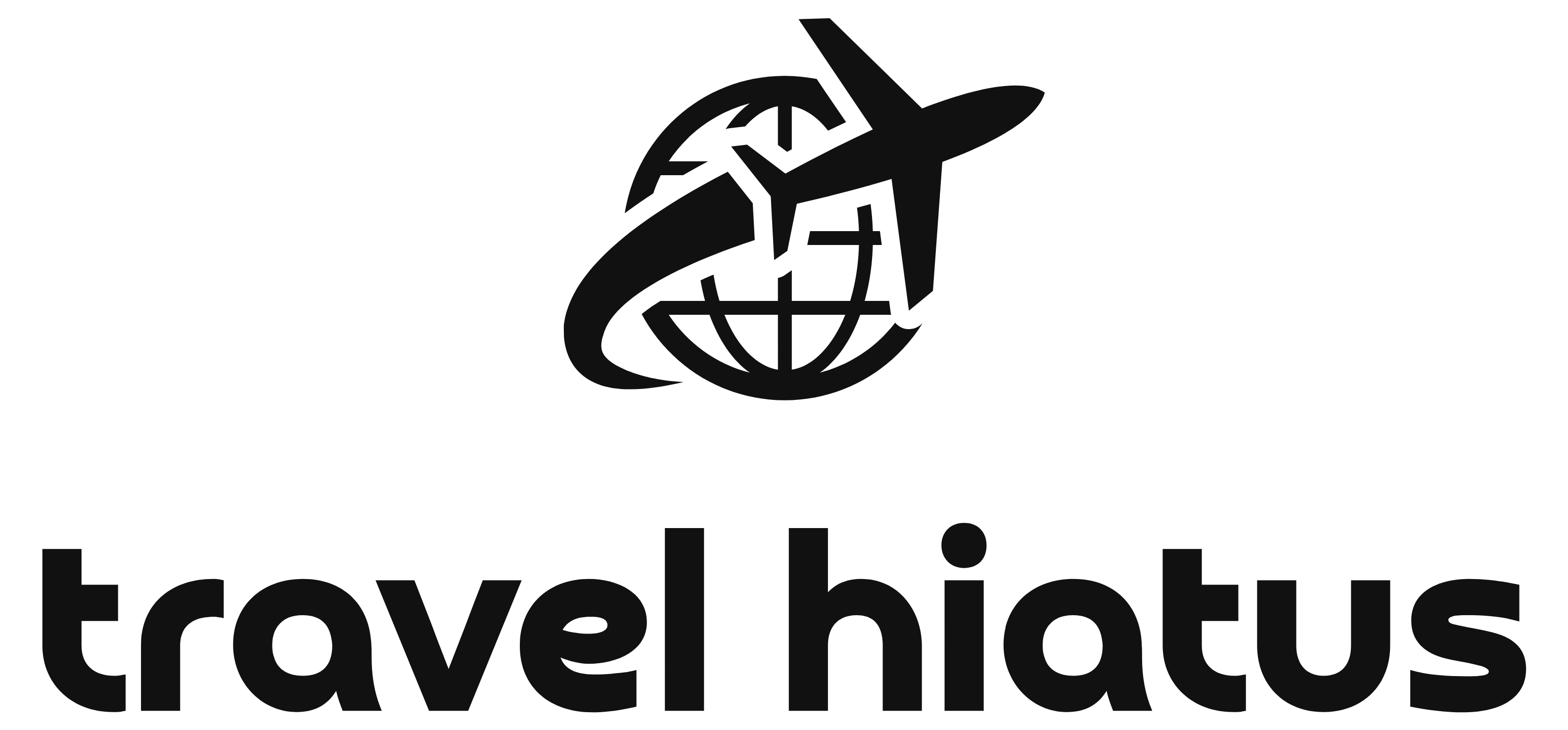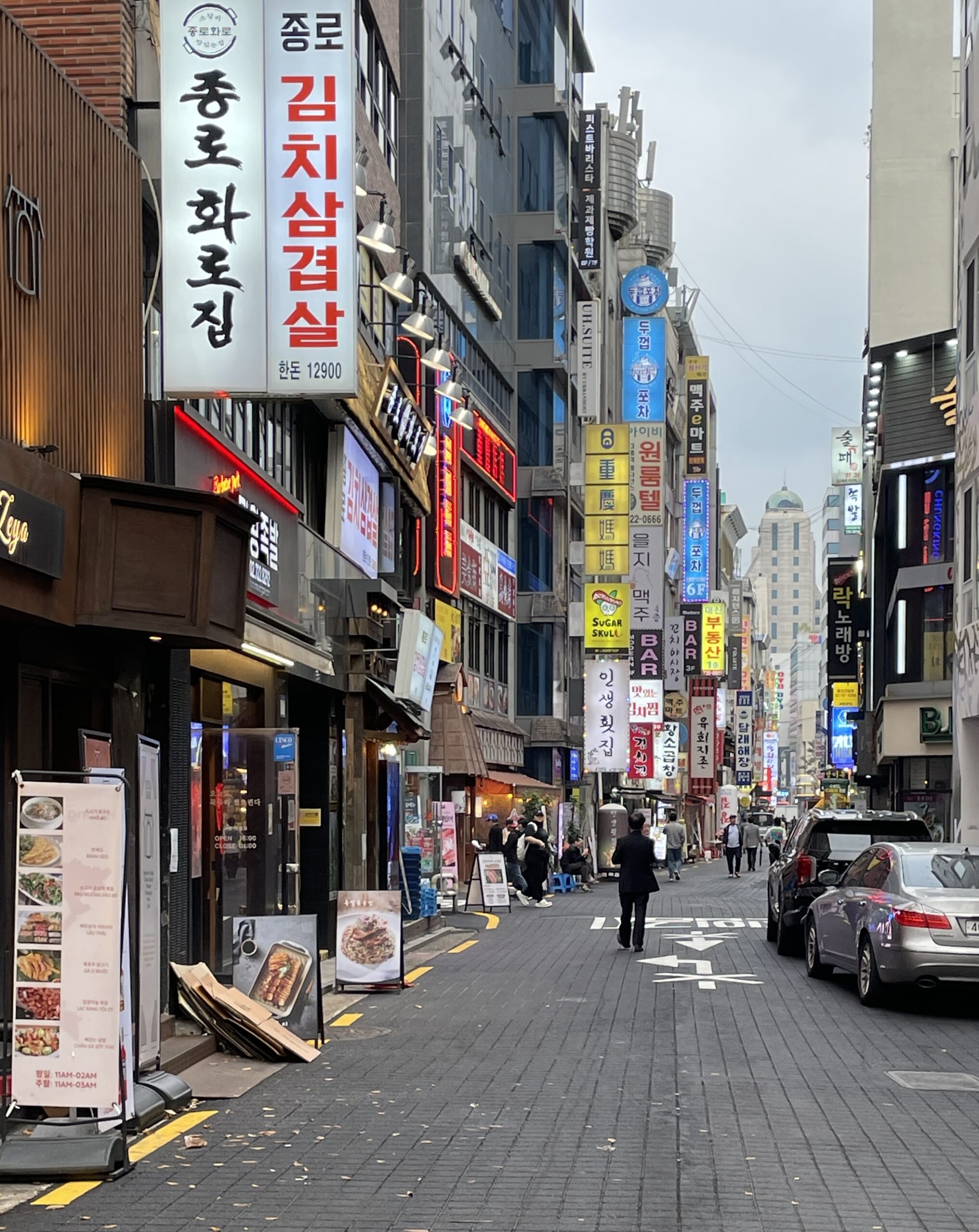19 Best Things to Do in Seoul, South Korea
Seoul is one of those cities that somehow blends the future and the past perfectly, and I love it.
One minute you’re walking through a centuries-old palace, the next you’re sipping cold brew in a neon-lit cafe or browsing K-beauty shops under a glowing skyscraper.
It’s fast-paced, full of energy, but still knows how to slow down in its temples, gardens, and traditional villages.
Whether it’s your first trip to South Korea or your fifth, Seoul always has something new to show you.
From food markets and fashion streets to mountain views and late-night karaoke in Myeongdong or Hondae, here are the best things to do in Seoul.
Explore Gyeongbokgung Palace
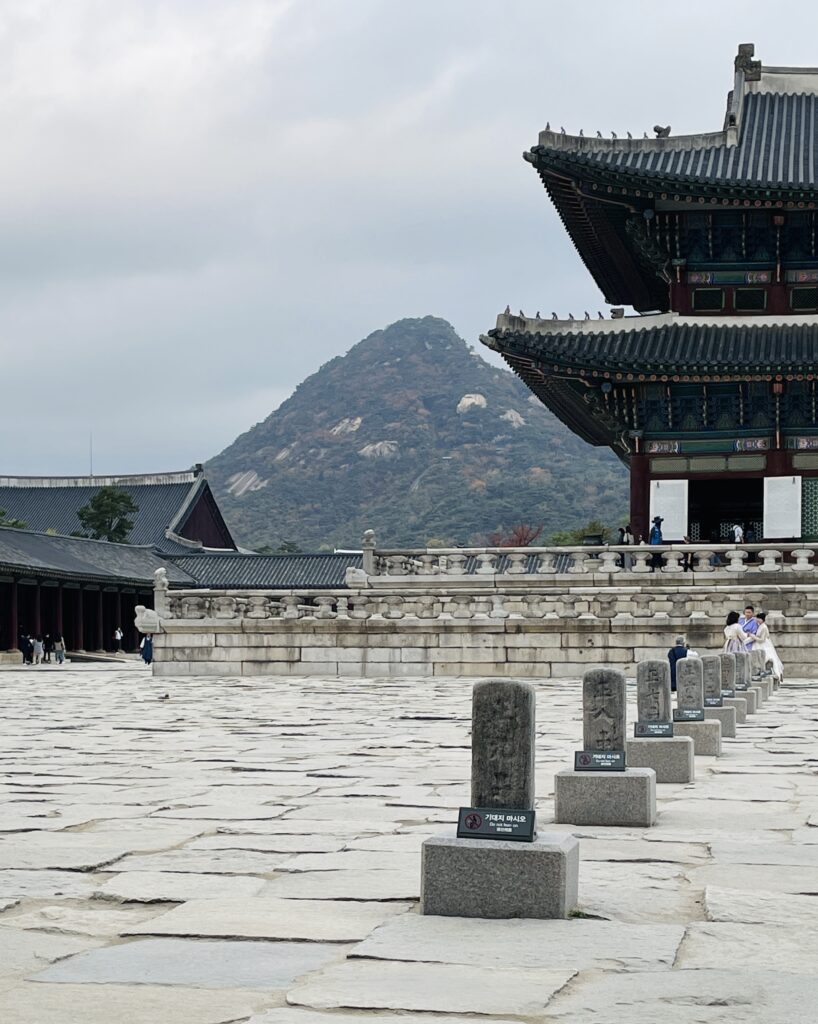
Start your Seoul adventure with one of its most iconic landmarks, Gyeongbokgung Palace.
Built in the 14th century during the Joseon Dynasty, this grand palace is a stunning mix of traditional Korean architecture and wide, photogenic courtyards.
The main gate alone is jaw-dropping, and once inside, you’ll wander past historic pavilions, tranquil ponds, and scenic mountain backdrops.
It’s the kind of place that gives you a real sense of just how deep Korea’s history runs, and how much of it still lives right in the middle of this ultra-modern city.
Take your time exploring, trust me, there’s a lot to see in the entire Palace compound.
Make sure to time your visit with the changing of the guard ceremony. Yes, it’s a little theatrical, but it adds a cool layer of tradition and is worth catching while you’re there.
Wander Bukchon Hanok Village
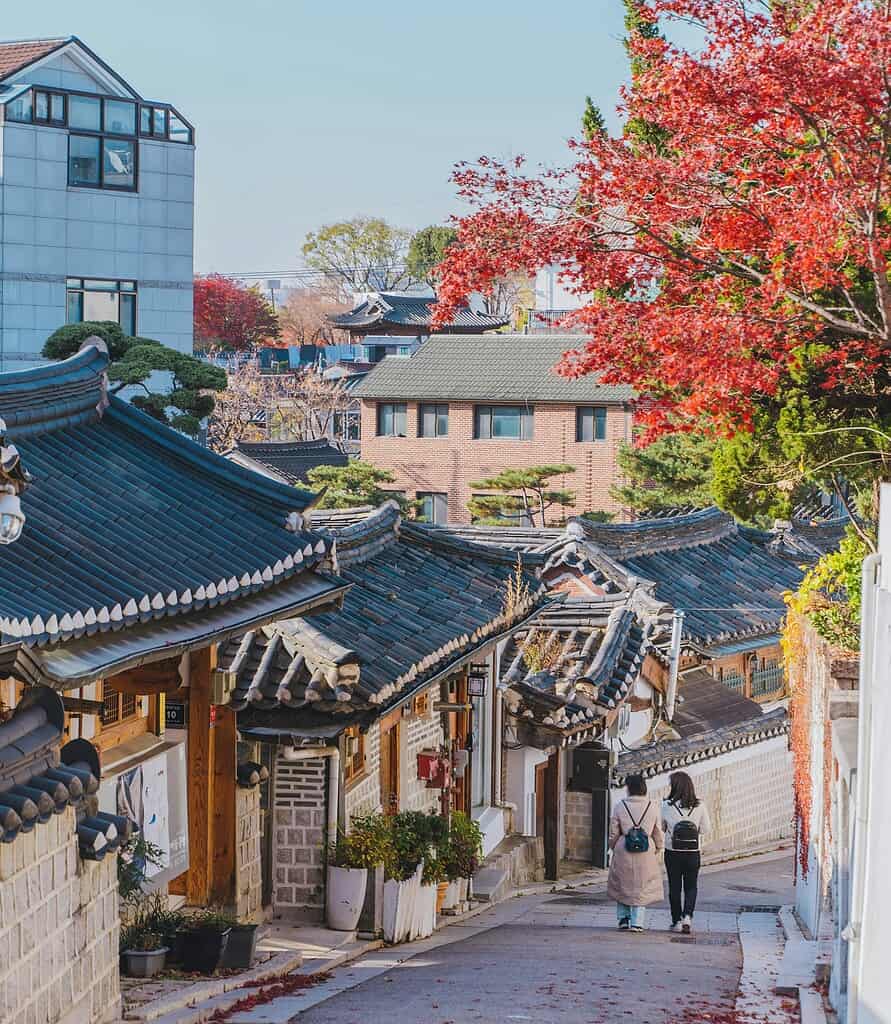
Bukchon Hanok Village is one of those places that feels like you’ve stepped into a different era, without leaving the city.
Tucked between modern neighborhoods, this area is filled with traditional Korean hanok houses that have been preserved for centuries.
The narrow alleyways, tiled rooftops, and wooden doorways make it a peaceful and photogenic escape from the buzz of Seoul.
Locals still live here, so while it’s a popular spot for visitors, it hasn’t lost its authenticity. You’ll find small art galleries, tea houses, and boutique shops hidden between the homes.
Please be respectful when taking photos, as mentioned many reside here, the village isn’t only a tourist attraction.
If you’re into slow travel moments and seeing Seoul’s quieter side, this is a must-visit. And early morning is the move if you want to avoid the crowds and get those postcard shots.
Explore the Myeongdong Night Market
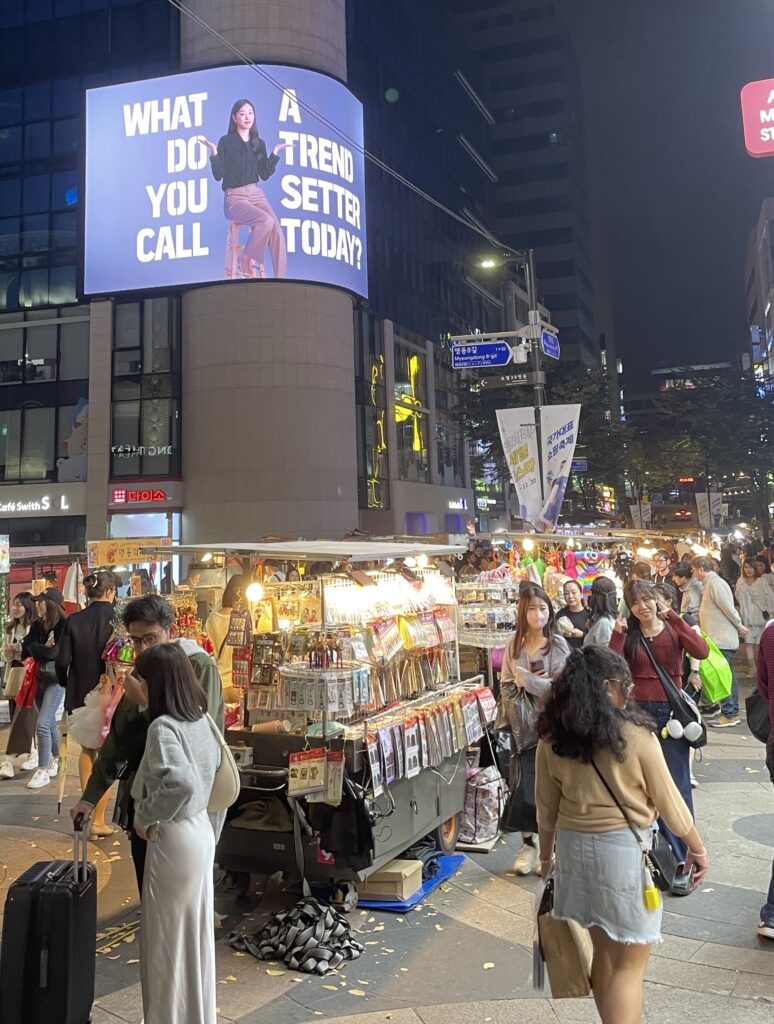
Myeongdong at night is sensory overload in the best way possible. Neon lights, sizzling food carts, music bumping from storefronts, this place is pure energy.
The Myeongdong night market is one of Seoul’s most famous, and for good reason.
You’ll find everything from tteokbokki (spicy rice cakes) and hotteok (sweet pancakes) to grilled cheese lobsters and giant skewers of marinated meats. It’s a full-on street food paradise.
Aside from food, the area’s packed with skincare shops, fashion boutiques, and pop-up stands.
It’s a good mix of locals and tourists, and it’s open late, which makes it a fun post-dinner stroll even if you’re full. Bring cash and go hungry, you’ll want to try more than one thing.
Taste Myeongdong’s night market flavors:
Walk Along the Cheonggyecheon Stream
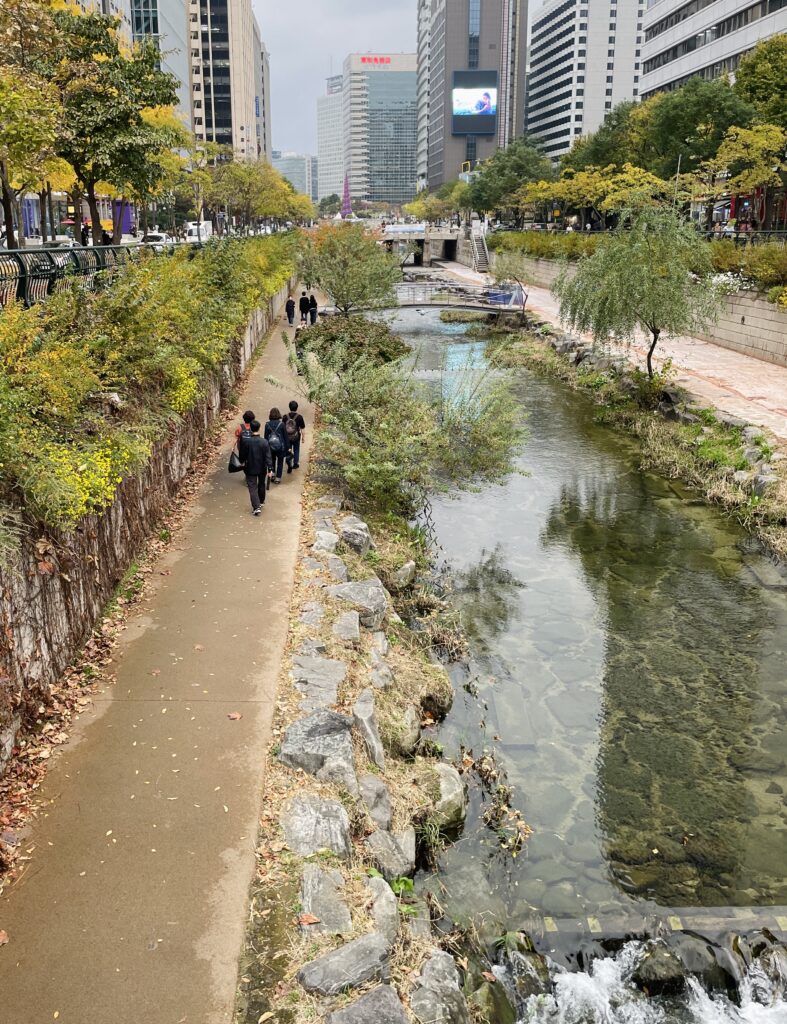
Right in the heart of downtown Seoul, Cheonggyecheon is a peaceful escape from the city buzz.
This 11-kilometer urban stream flows beneath tall buildings, with stone walkways, waterfalls, murals, and greenery lining the way.
It’s a local favorite for a casual walk, especially in the evening when the lights come on and the whole stream feels almost magical.
Some parts even host seasonal light festivals or lantern installations. If you’re staying nearby, it’s the kind of spot you’ll want to return to more than once.
Grab a drink or snack from GS25, take a stroll, and soak up a different side of the city.
Visit N Seoul Tower (Namsan Tower)
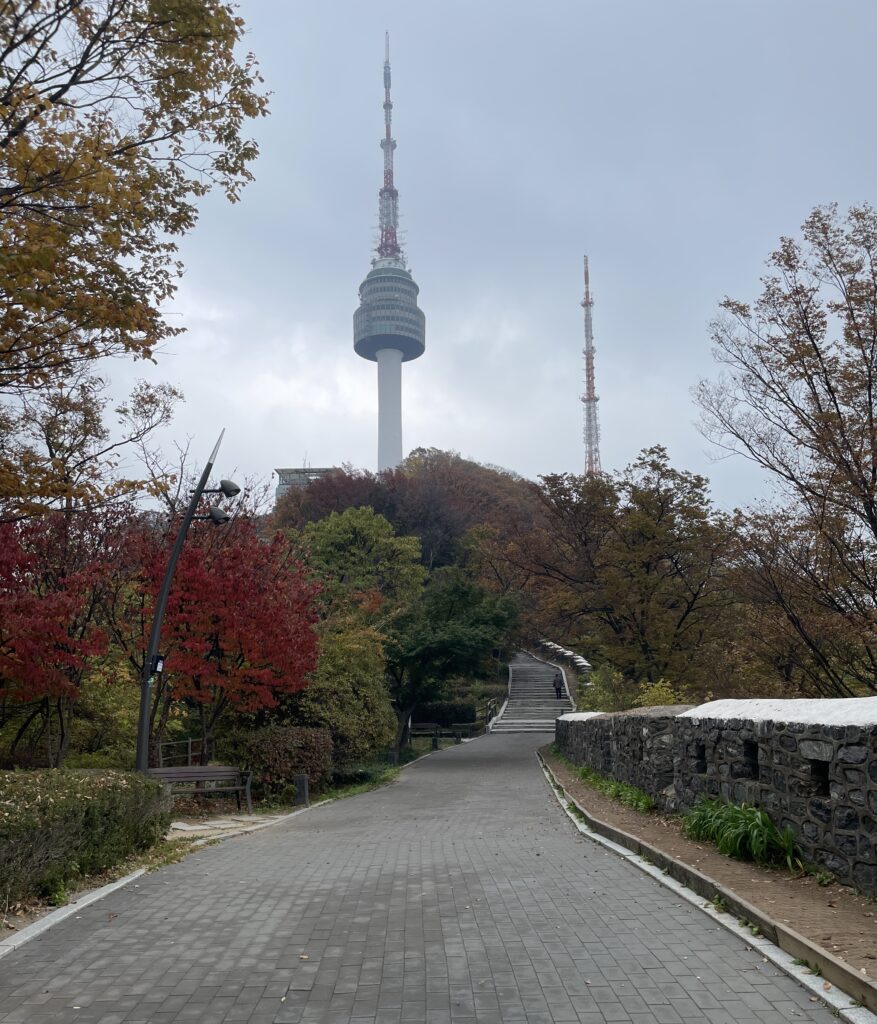
For one of the best views in Seoul, head up to Namsan Tower. You can hike up if you’re feeling active, but most people take the cable car, it’s easy and the views on the way up are already impressive.
Once at the top, you get panoramic views of the city, especially stunning at sunset or after dark when everything lights up.
You’ll also spot the famous “Locks of Love” area where couples leave padlocks as a symbol of their love.
There are cafes and observatories at the top, so you can chill and enjoy the view for a while.
I’ve done this hike late autumn and summer in Seoul, it’s always been amazing to see the city from above. Locals have told me it’s beautiful during winter, but I like my warm weather.
Get a City View from Lotte World Tower
Seoul’s skyline is impressive, and one of the best places to soak it all in is from the top of the Lotte World Tower, Korea’s tallest building and the fifth tallest in the world.
Head up to the Seoul Sky Observatory for panoramic views of the entire city.
On a clear day, you can see the Han River weaving through town, the mountains in the distance, and the dense grid of buildings that make up this buzzing metropolis.
The glass floor section is not for the faint of heart, but it’s a thrill if you’re up for it.
You can visit during the day, but golden hour and early evening offer the most magical views.
Visit the DMZ (Demilitarized Zone)
For something completely different, the DMZ is one of the most unique day trips from Seoul. It’s the narrow strip of land separating North and South Korea, and yes, you can visit parts of it.
Most people join a guided DMZ tour (which is required for some areas), where you’ll learn about the Korean War, the tense relationship between the two countries, and see key sites like the Third Infiltration Tunnel and the Dora Observatory.
It’s a fascinating and sobering experience that gives you perspective on Korea’s complex history.
Eat Your Way Through Gwangjang Market
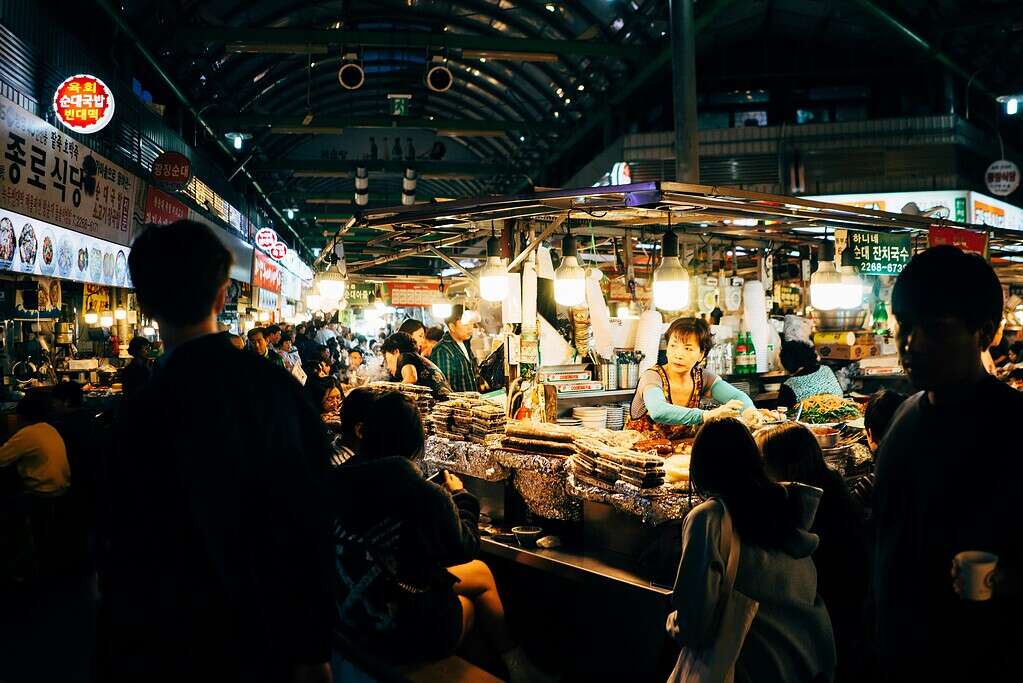
This is street food heaven. Gwangjang Market is one of the oldest traditional markets in Seoul and it’s packed with food stalls serving up Korean classics.
From crispy bindaetteok (mung bean pancakes) and hotteok (sweet pancakes) to soondae (blood sausage) and spicy tteokbokki, you can sample it all here.
Grab a seat at one of the stalls, point to what looks good, and dig in. It’s chaotic, lively, and incredibly satisfying.
If you’ve ever watched Korean food shows or travel YouTubers exploring Seoul, chances are you’ve already seen this place, it’s that iconic.
Take a Stroll Through Insadong
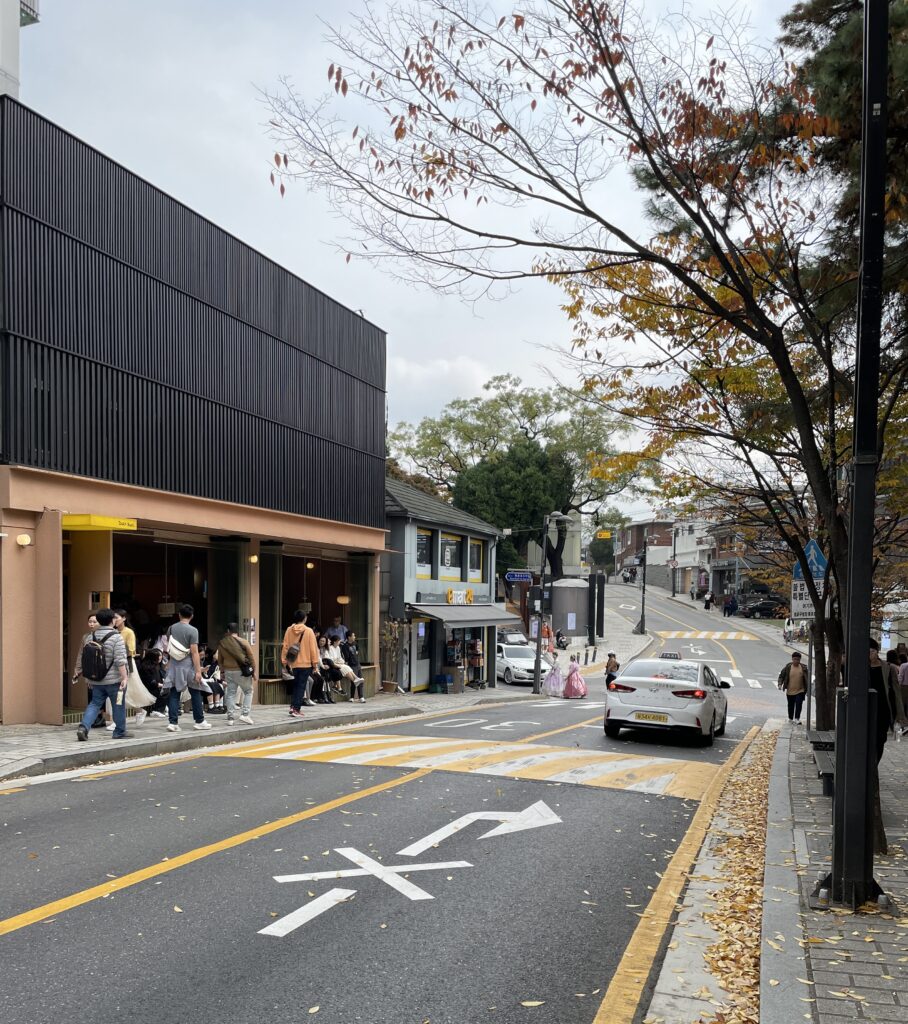
Insadong is one of Seoul’s most charming neighborhoods, known for its traditional Korean vibe blended with a creative, artsy twist.
This pedestrian-friendly street is lined with shops selling everything from handmade crafts and antiques to quirky souvenirs and teas.
It’s a great spot to wander aimlessly, duck into a calligraphy shop, browse through vintage postcards, or try street snacks like hotteok (sweet pancakes) or twisted doughnuts.
There are also small galleries and teahouses tucked between alleyways, perfect for a quiet break from the bustle.
Insadong is an easy place to spend an afternoon getting lost, shopping for keepsakes, and soaking in old-meets-new Seoul, it’s one of my best areas in Seoul to stay in.
Visit Jogyesa Temple
Right in the middle of the city, Jogyesa Temple is Seoul’s most important Buddhist temple, and it’s a peaceful break from the surrounding urban chaos.
Walk past the colorful lanterns and ancient trees as you enter, and you’ll find worshippers lighting incense and monks moving through quiet rituals.
The main hall, Daeungjeon, is beautifully adorned and often surrounded by blooming flowers or seasonal decorations.
If you’re in Seoul during Buddha’s Birthday (usually in May), Jogyesa is the place to be, the entire temple gets dressed up in vibrant lanterns and hosts cultural celebrations open to the public.
Check Out the Starfield Library
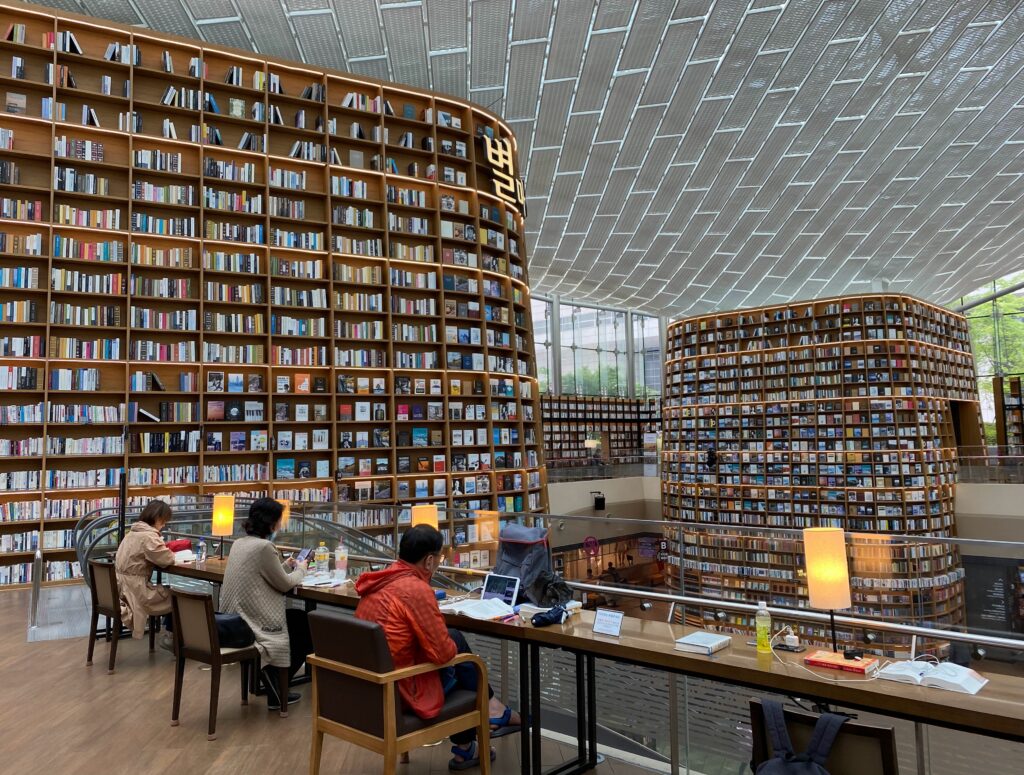
Tucked inside the massive COEX Mall, Starfield Library is one of Seoul’s most iconic modern spaces.
With two towering stories of bookshelves, floor-to-ceiling windows, and sleek design, it’s as much a visual experience as a functional library.
Even if you’re not in the mood to read, it’s worth a visit just to soak in the aesthetics.
You’ll spot locals working on laptops, couples lounging with coffee, and visitors snapping photos from every angle. It’s free, open to the public, and a perfect rainy day activity.
It’s one of those attractions you see on social media and question whether it’s real or not. After your visit to the famous library, you can explore the affluent Gangnam area.
Catch the Sunset at Jamwon Hangang Park
Jamwon Hangang Park is a local favorite, especially when golden hour hits. Located along the Han River, this chill park has wide-open views of the water and skyline, plus grassy patches perfect for lounging.
Locals often bring mats, fried chicken, and a few drinks to enjoy a lazy evening outdoors. Some even order food delivery straight to the park (yes, it’s a thing).
On a clear evening, the skies turn pastel over the bridges and high-rises, and the vibe is all-around serene.
Rent a bike, take a slow stroll, or just post up by the riverbank and soak it all in. It’s one of the best ways to wind down after a busy day in the city.
Chill at a Korean Jjimjilbang (Spa)
If you want to experience a truly unique part of Korean culture, spending a few hours (or even a night) at a jjimjilbang is a must.
These traditional Korean bathhouses are more than just spas, they’re a whole experience.
You’ll start by soaking in various hot baths, steam rooms, and saunas (separated by gender), and then head into the co-ed areas where you’ll find heated relaxation rooms, sleeping mats, snack bars, and even arcades or movie rooms in larger spots.
Dragon Hill Spa and Siloam Sauna are two popular options for visitors. Don’t be surprised to see locals catching a nap on the floor or enjoying a chilled sikhye (sweet rice drink) after a scrub.
It’s affordable, rejuvenating, and the perfect way to relax after a few days roaming around the city.
Experience the Vibe in Hongdae
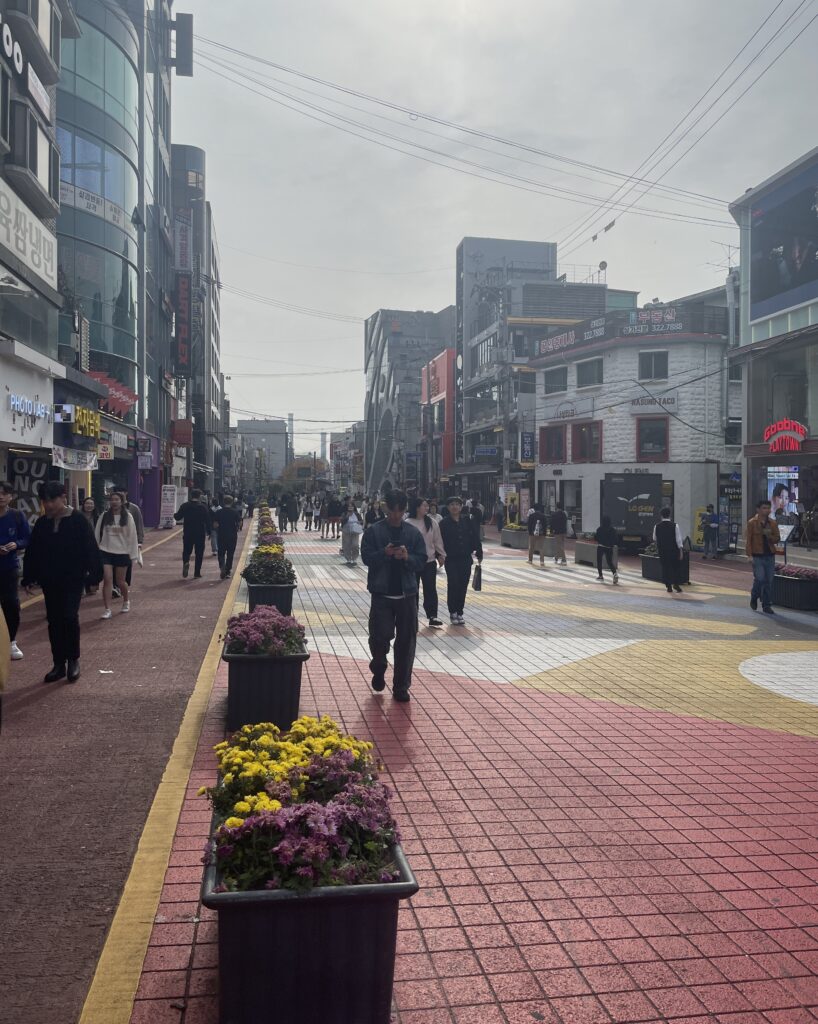
Hongdae is Seoul’s energetic playground, a creative, youthful district known for its art scene, food stalls, and buzzing nightlife.
By day, you’ll find stylish cafes, indie boutiques, and fun arcades. By night, the whole area lights up with music, street performances, and packed walking streets.
It’s the kind of place where there’s always something going on. Think: weekend markets, spontaneous dance battles, and musicians drawing crowds on the sidewalk.
There’s also no shortage of late-night eats, grab some spicy tteokbokki, fried chicken, or Korean corn dogs while you roam.
Don’t miss Gyeongui Line Forest Park, a peaceful green stretch cutting through the heart of Hongdae. It’s a great spot to relax, enjoy a coffee, or watch locals picnic and hang out under the trees.
The mix of urban buzz and laid-back park life is part of what makes Hongdae such a dynamic place to explore.
Catch a Show or Museum in Dongdaemun Design Plaza
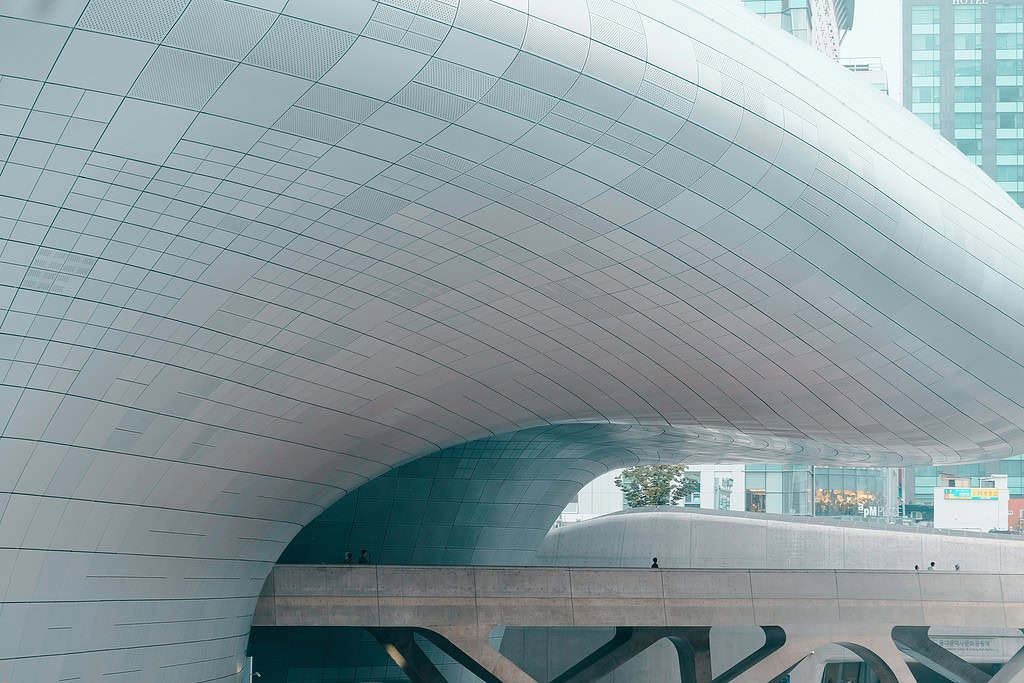
Dongdaemun Design Plaza (DDP) is one of the most striking buildings in Seoul, all smooth curves and futuristic vibes.
Designed by the legendary architect Zaha Hadid, this massive cultural complex is home to art exhibitions, design shops, installations, and some of Seoul’s coolest events.
It’s a hub for fashion and creativity, with rotating exhibits and cultural programs happening throughout the year.
Whether you’re checking out a museum-style installation, attending Seoul Fashion Week, or just walking around the LED rose garden at night, DDP always has something going on.
Shop the Trendy Garosugil Street in Sinsa-dong
Garosugil in Sinsa-dong is where Seoul’s effortlessly cool crowd goes to shop, sip, and be seen.
This tree-lined street is packed with trendy boutiques, stylish cafes, and designer concept stores.
Think minimalist Korean brands, curated lifestyle shops, and fashion-forward finds you won’t see anywhere else.
It’s also an Instagrammer’s dream, with pastel storefronts, plant-filled cafés, and photogenic desserts around every corner.
Perfect for a chill afternoon of window shopping or treating yourself to something unique.
Even if you’re not in the mood to spend, the people-watching and aesthetic energy alone make it worth the stroll.
Hike Bukhansan National Park
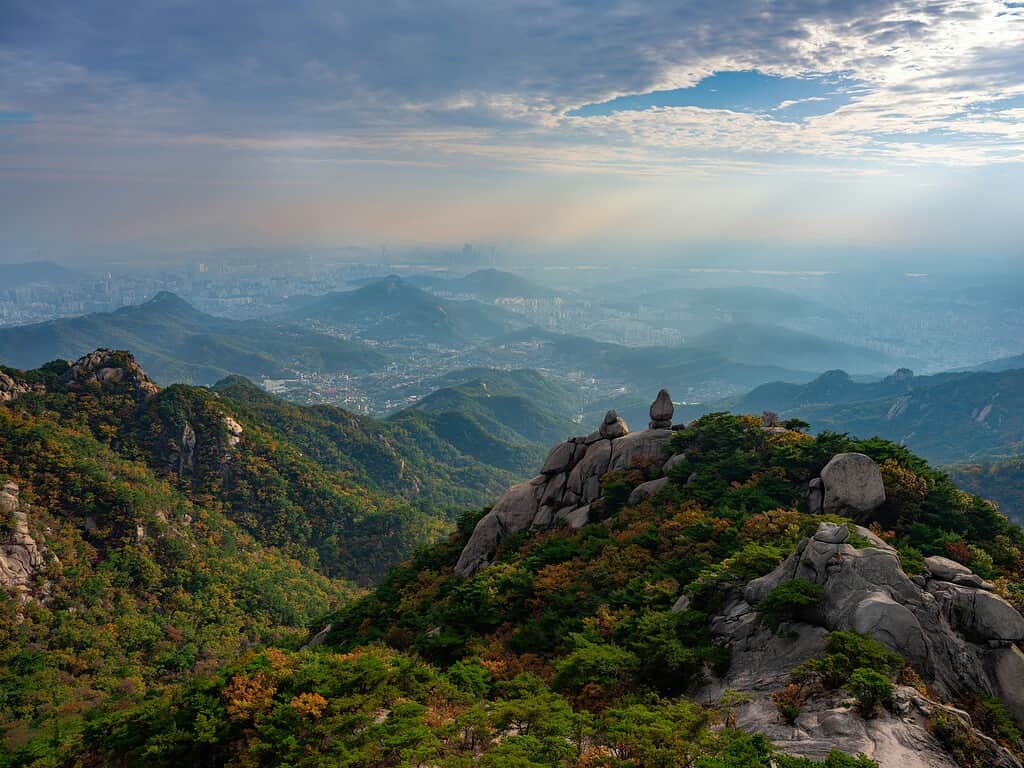
Need a break from the city? Bukhansan National Park is Seoul’s slice of wilderness, complete with forested trails, granite peaks, and panoramic views of the entire city.
It’s a favorite local escape, especially on weekends when hikers hit the trails early.
There are routes for every level, from relaxed paths to more challenging climbs like Baegundae Peak, the highest point in Seoul.
For those less keen on hiking, you’ll want to stick to visiting N tower where there’s a cable car, there’s no cable car at Bukhansan National Park.
Expect serene temples along the way, dramatic rock formations, and fresh mountain air.
Pack some snacks and make it a half-day adventure. It’s a totally different side of Seoul, when you’re there you’ll feel you’ve left the city entirely at times.
Discover the Street Food in Mangwon Market
Mangwon Market is a lesser-known gem, especially for food lovers. Less touristy than Gwangjang or Namdaemun, it’s where locals go for fresh produce, snacks, and comfort meals that hit the spot.
You’ll find everything from tteokbokki (spicy rice cakes) and mandu (dumplings) to giant pork cutlets and fluffy egg bread. It’s super affordable, authentic, and full of charm.
Mangwon itself is an underrated neighborhood with cozy cafes and indie vibes, so you can easily spend a half day here exploring beyond just the market.
Experience Seoul’s Cafe Culture
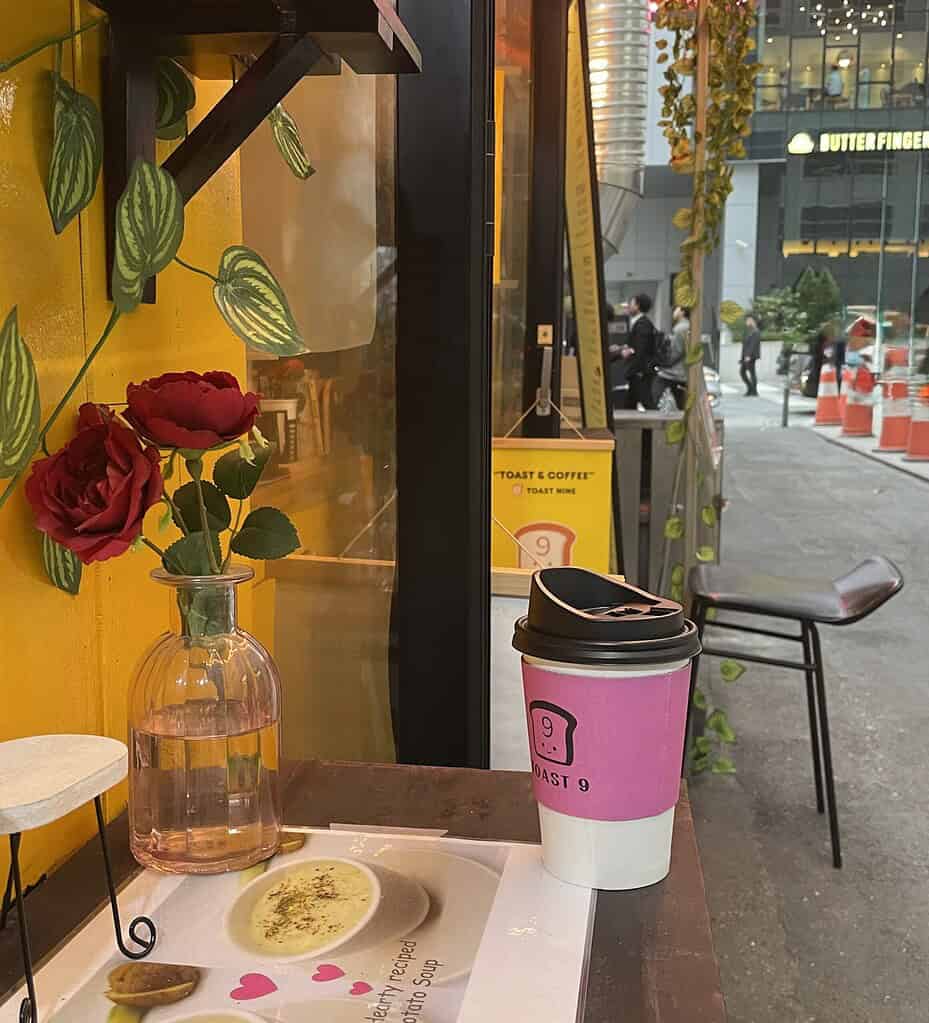
Seoul takes its cafes seriously. Beyond just a caffeine fix, cafés in the city are entire experiences, from floral-themed tea houses to sleek, minimal coffee labs and vintage-inspired hangouts.
Some cafés are designed for aesthetics, others for community. Many double as galleries, bookstores, or creative spaces.
Whether you’re into hidden rooftop spots, cozy nooks, or novelty animal cafés, there’s something for every vibe.
Exploring Seoul’s café scene is one of the best ways to discover the city’s personality, one cup at a time.
Best Areas to Stay in Seoul
Seoul is a city of neighborhoods, each one offering a totally different vibe. Whether you’re into shopping, culture, food, or nightlife, choosing the right area can really shape the kind of trip you’ll have.
If you’re unsure which neighborhood fits your travel style, this area breakdown highlights four of the most well-known and visitor-friendly spots.
And if you want a deeper dive, I’ve put together a full guide on where to stay in Seoul based on different travel styles and budgets.
Insadong: A traditional-meets-arty neighborhood with teahouses, calligraphy shops, and street performances. Great for first-timers looking to soak in some authentic culture and still stay central.
Recommended Stays: NineTree Premier Hotel & Sunbee Hotel Insadong Seoul
Myeongdong: Seoul’s shopping epicenter. Expect glowing signs, beauty shops, food stalls, and quick access to major sights like Namsan Tower. Perfect for convenience and nonstop energy
Recommended Stays: L7 Myeongdong by LOTTE & Nine Tree Hotel Myeongdong
Itaewon: International and diverse, with restaurants from around the world, rooftop bars, and a buzzing nightlife scene. It’s one of the most global parts of Seoul with plenty of cuisines from around world.
Recommended Stays: Imperial Palace Boutique & Nouvelle Hotel
Hongdae: A youthful, artsy area full of cafes, clubs, and indie boutiques. Home to street performers and creative energy, it’s perfect if you want to be surrounded by Seoul’s younger crowd.
Recommended Stays: Mercure Ambassador & 9Brick Hotel
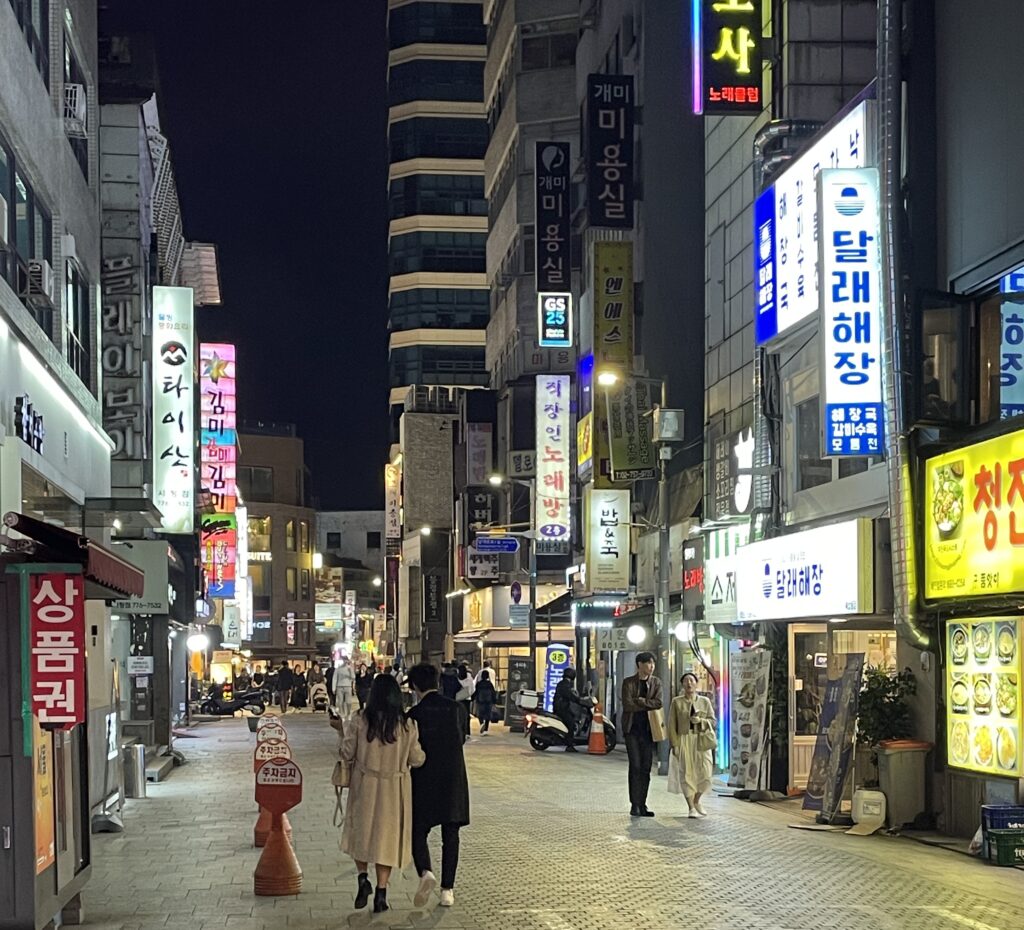
How to Get Around Seoul
Seoul might look like a mega-city maze at first, but once you understand the transportation options, it’s incredibly easy to navigate, clean, efficient, and very well-connected.
From speedy subways to late-night taxis and super convenient apps, here’s how to move around the city like a pro.
- Airport Transfers: From Incheon Airport, the AREX train is the most efficient way into the city, connecting to Seoul Station. For added comfort, pre-book a private transfer through Klook or your hotel, especially if you’re arriving with lots of luggage or late at night.
- Subway: Seoul’s subway system is world-class. Fast, spotless, and with English signage throughout. It’s hands-down the easiest way to get around, grab a T-money card at any convenience store and top up as you go. Key stations: Hongdae, Myeongdong, Gangnam, and Seoul Station.
- Kakao T & Taxis: Kakao T is the go-to app for calling taxis in Seoul. It’s reliable, shows estimated fares, and removes the language barrier. Taxis are relatively affordable, but avoid rush hour when traffic can get wild.
- Buses: Great for reaching areas the subway doesn’t cover, but they’re more confusing for first-timers. Still, if you’re feeling adventurous, the color-coded system is easy enough to learn with Naver Maps helping you along.
- Walking & Neighborhood Hopping: Seoul is made for walking. Many areas like Insadong, Bukchon Hanok Village, and Hongdae are best explored on foot. Just be ready for some hills, this city isn’t flat!
By the way don’t be surprised if you hit a massive intersection with no crosswalk in sight sometimes in Seoul. Pedestrian overpasses are common, so just look up and you’ll often spot stairs or escalators leading to a walkway above.
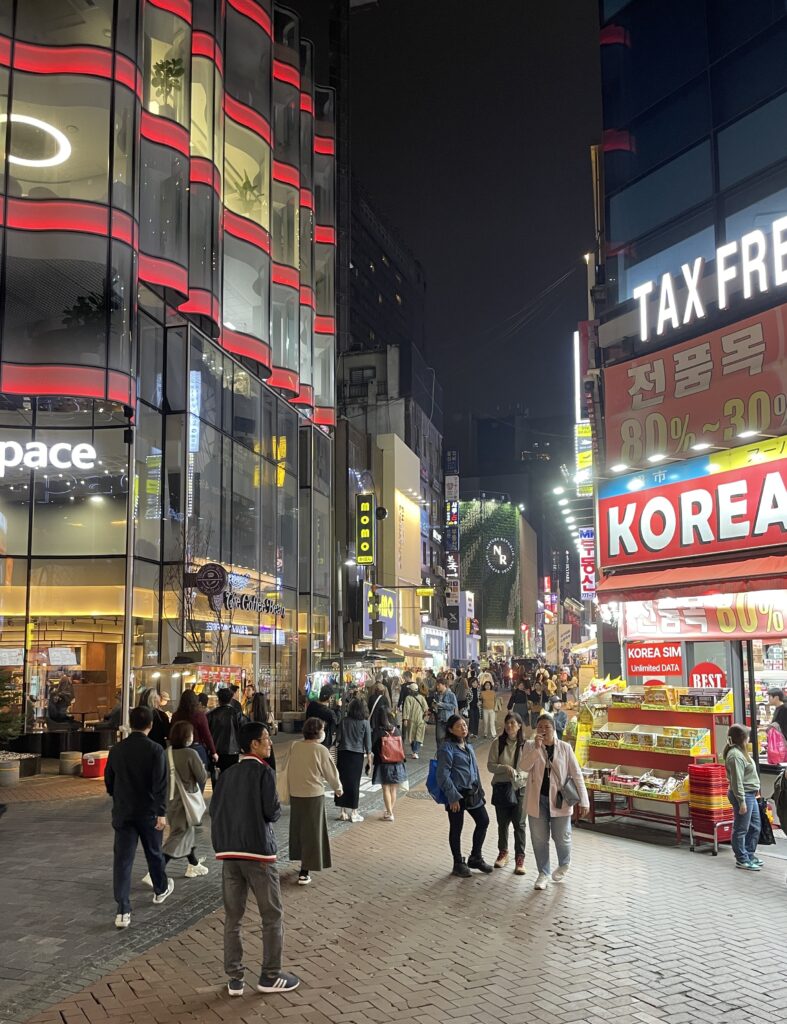
Best Time to Visit Seoul
Seoul is a city with four distinct seasons, and the time of year you visit can shape everything, from what you wear to what you eat.
Spring and autumn are the crowd favorites, offering ideal weather and beautiful scenery.
But summer and winter each have their own charm too, especially if you don’t mind the extremes.
Spring: March to May
Spring in Seoul is all about cherry blossoms, fresh air, and festivals. Temperatures range from 10–20°C (50–68°F), and parks like Yeouido and Seokchon Lake explode with color. Seoul’s also known for this charming cherry blossoms, not only Tokyo!
It’s one of the best times to explore the city on foot, just be aware it’s also a peak tourism season, so expect crowds in blossom hotspots.
Summer: June to August
Hot, humid, and often rainy, Seoul summers can be intense. Highs hit 30–35°C (86–95°F), with a monsoon season peaking in July.
Still, it’s a fun time if you’re into water parks, nighttime festivals, and vibrant street life. Just bring sunscreen and stay hydrated.
Autumn: September to November
Arguably the best time to visit Seoul. Crisp air, blue skies, and fiery foliage take over parks and palaces.
Temperatures sit around 15–25°C (59–77°F), and the city feels especially scenic. It’s perfect sweater-weather season, ideal for hiking, café-hopping, and photo walks.
Winter: December to February
Cold but beautiful. Expect temperatures between -5 to 5°C (23–41°F), occasional snow, and festive vibes.
Ice skating rinks pop up, holiday lights twinkle across the city, and street food suddenly tastes better when it’s freezing out. Great for shoppers and food lovers, just bundle up!
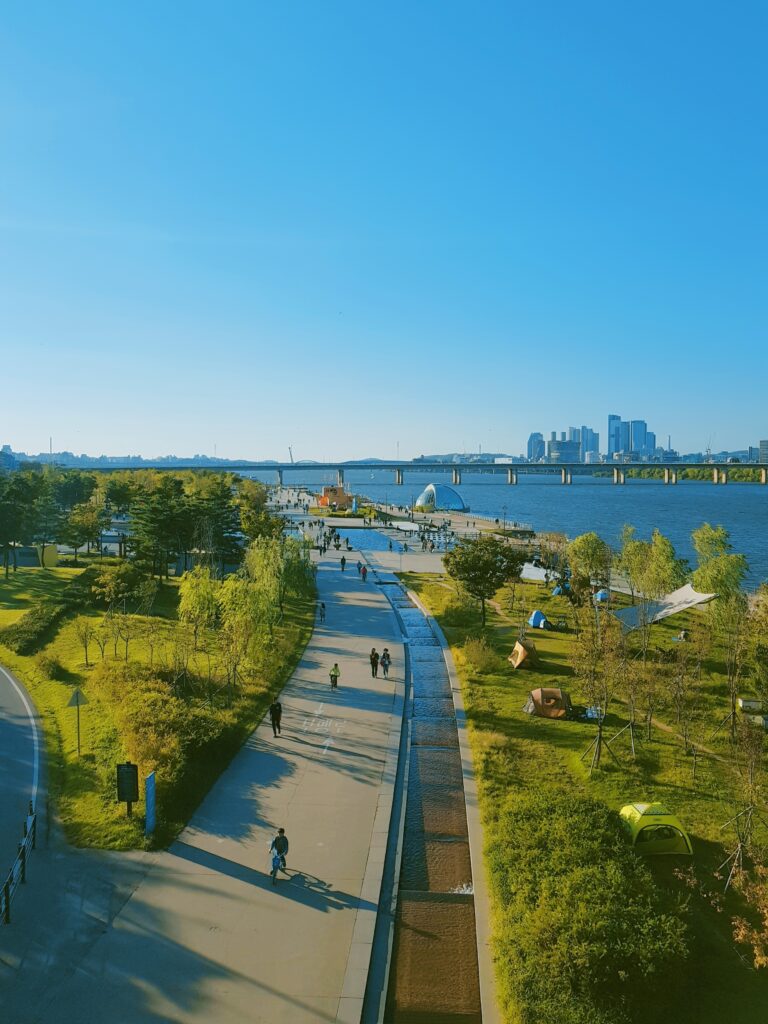
Final Thoughts on the Best Things to Do in Seoul
I first visited Seoul because Korean food is, without question, my favorite cuisine in the world.
It’s bold, balanced, incredibly diverse, and often healthy, and I’ll stand by that in any food debate. But beyond the flavors that pulled me in, what really struck me was the city itself.
Seoul is a place that rewards curiosity. It’s massive and modern, but broken up into vibrant pockets, each with its own personality.
Hongdae is youthful, creative, and buzzing with street performers, snack stalls, and vintage shops. Itaewon offers a more cosmopolitan vibe, filled with global eats, rooftop bars, and a uniquely international feel.
Then there’s Myeongdong, fast-paced and electric, where beauty shops and fashion collide with crowds and street food.
And just a short walk away, you’ll find the calm charm of Insadong, where you can explore galleries, tea houses, and artisan shops steeped in tradition.
Every neighborhood in the city feels like a world of its own, that’s what makes Seoul so special. It’s not just the culture or the food that stands out, but also how effortlessly the city blends modern life with nature.
You’ve got entire districts separated by lush parks, riverbanks, and forested hills, giving the city breathing room and a rhythm that feels uniquely balanced.
Whether you’re here to dive into its food scene, explore its culture, or simply take in the contrast of old and new, this city delivers.
You don’t just visit Seoul, you experience it, one district, one bite, and one moment at a time.
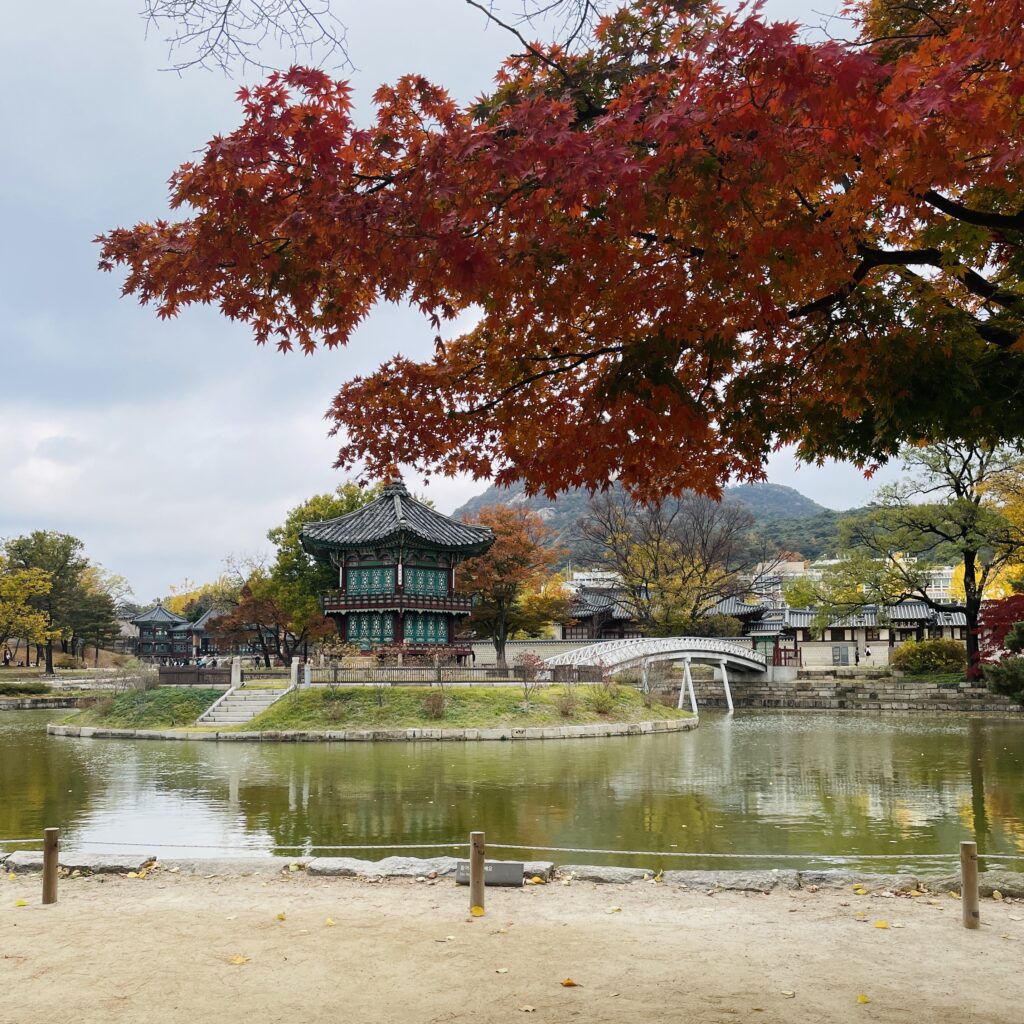
What are the best things to do in Seoul for first-time visitors?
First-time visitors should explore a mix of historical sites like Gyeongbokgung Palace, trendy neighborhoods like Hongdae, and must-eats at places like Gwangjang Market. Don’t miss cultural gems like Bukchon Hanok Village and a walk along the Cheonggyecheon Stream.
How many days do you need to see the top attractions in Seoul?
A solid 3 to 5 days in Seoul is enough to cover the best things to do in Seoul at a relaxed pace. This gives you time for key neighborhoods, a few day trips, and enough flexibility to enjoy spontaneous discoveries.
What’s the best way to get around Seoul?
The subway system is your best friend, it’s affordable, clean, and extensive. Pair that with walking in pedestrian-friendly neighborhoods like Insadong or Itaewon, and you’ll get the most out of exploring Seoul.
When is the best time to visit Seoul?
Spring (April–June) and autumn (September–November) are ideal for pleasant weather, cherry blossoms, or fall foliage. These seasons are perfect for enjoying outdoor attractions and the overall charm of the city.
